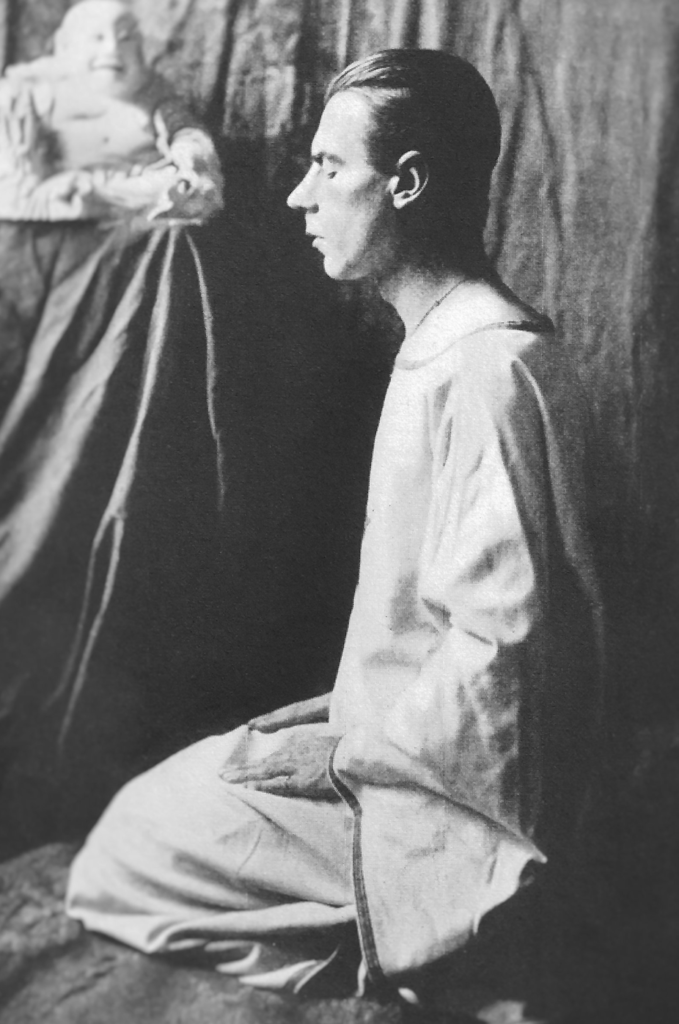
Charles Stansfeld Jones was an enormously important figure in early Thelema. Born in 1886, making him eleven years younger than Aleister Crowley, he joined the A∴A∴, taking the name Achad, in 1909 after reading The Equinox.
Much of the mythos and conceptualization of the process of ascension and “Crossing the Abyss” comes from Jones’ annotated essay “Liber CLXV – A Master of the Temple,” which appeared in the The Equinox: Volume III, Number I, published in 1919.
Crowley came to consider Jones his “magical child” and Jones joined Crowley in New York during the end of his American period, taking part in his Amalantrah Working. While Jones is usually seen through Crowley’s eyes, he was a serious thinker and writer and his unacknowledged influence on Crowley was considerable.
His standout Thelemic work is The Chalice of Ecstasy – Being a Magical and Qabalistic Interpretation of the Drama of Parzival by a Companion of the Holy Grail, published in 1923, but he made several other notable contributions, including Thirty-one Hymns to the Star Goddess who is Not, by XII who is Achad.
Achad did not restrict himself to musings on Liber AL or Crowley’s corpus. He published Crystal Vision through Crystal Gazing as well as several works on kabalistic geometry, including Anatomy of the Body of God, and The Egyptian Revival, a hugely influential work which included many ideas later adopted by other authors, usually without credit.
Crowley dedicated his major work framing Thelemic principles, Liber Aleph vel CXI: The Book of Wisdom or Folly, to Jones and intended it for his instruction.
After leaving Jones in America, Crowley had shipped him six tons of books in September 1920, leaving Jones to borrow money to pay the duties. According to researcher Richard Kaczynski he these were placed in storage in Detroit’s Leonard Warehouse and lost when Jones moved to Chicago.
Shortly before his death in 1923, Theodor Reuss made Jones Grand Master (X°) for North America and gave signs he might intend to Jones to be his successor as head of O.T.O. Crowley asserted his control of the organization, and the ailing Reuss died before challenging him, but Crowley’s suspicion and jealousy of Jones were aroused. There was subtle sparring between the two throughout 1924 when Crowley was both depressed and in desperate need of money. In August of 1925 the two quarreled over Crowley’s Detroit sales and the lost books, and their relationship never recovered.
Achad has been accused of “abandoning Thelema,” “going crazy” or “converting to Catholicism.” Of these only the last is likely true, and that in limited measure. In 1925 Crowley ran the only organized Thelemic body and to fall out with him was to be outcast from the core of Thelemic practice. Had Reuss survived another two or three years, the outcome might have been very different.
Much of what is “known” about Jones comes from Kenneth Grant, an unreliable narrator who had his own agendas. His statements about Jones insanity are manifestly unproven, and the odds they are more than hearsay calumny very low. It is certainly possible that at one point Jones repudiated both Crowley and Liber AL, but the same can be said of Crowley himself. Few conventional Thelemic writers had any use for a Thelemic luminary who fell out with Crowley no matter how interesting or enlightened.
Jones took a strong interest in the work of French psychologist and hypnotist Émile Coué, who pioneered autosuggestion. Amid a craze for Coué in the post war period Jones briefly floated an organization that combined Thelema and Couéism.
Starting around 1921 Jones became involved with the Universal Brotherhood, or Integral Fellowship which had an A∴A∴ like structure and was popular among Theosophists. He saw U.B. as a route to perpetuate some of the basic teachings of A∴A∴. By 1924, Jones’ body of U.B. had seventy members and was quite successful, however he was caught in the political crossfire of his falling out with Crowley and Crowley’s feud with Theosophophical Society leader Annie Besant.
Jones converted to Roman Catholicism in the late 1920s, but became and remained head of the U.B. until his death in 1950. His take on Catholicism was likely irregular and deeply eclectic, as it involved home masses. At a time when interest in Saint Cyprian is rising, Jones would be neither the first nor last Thelemite to see an overlap with esoteric Catholicism.
Rumors repeated by Grant about some bout of insanity aside the evidence is that Jones returned to Vancouver to marry and raise a family, accounting for his more settled lifestyle after 1930.
Despite being considered anathema by both O.T.O. and the Theosophical society, U.B. seems to have faired passably under Jones leadership and subsequently survived for some years under Dr. John P. Kowal and Fredrick J. Kayser. He corresponded with Gerald Yorke and others about Thelema until a few years before his death, and provides the most credible information about Crowley’s XI ritual.
A leader in his own right, Jones is one of many early talents whose work at writing, publishing, and book selling insured that Thelemic ideals survived the 1920s. His insistence on his own place as an author, thinker, and leader, rather than subordination to Crowley, has led to considerable resistance to the perpetuation of his memory in some Thelemic quarters.
